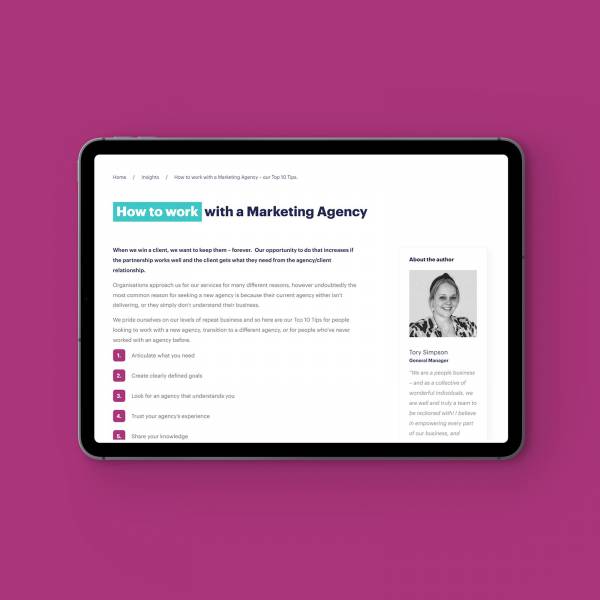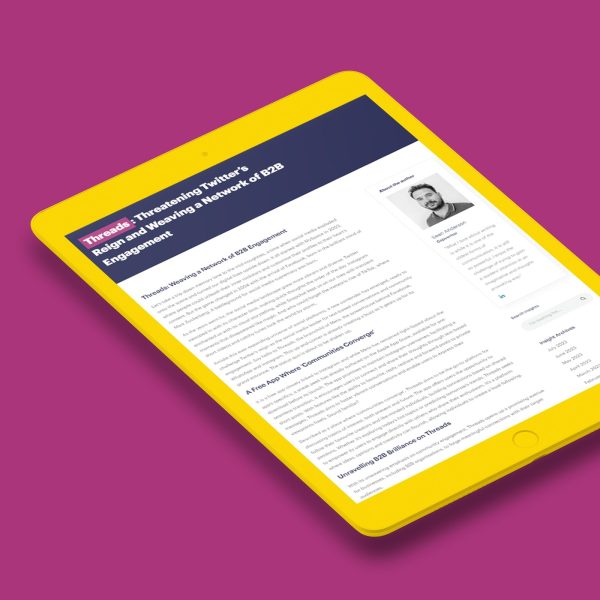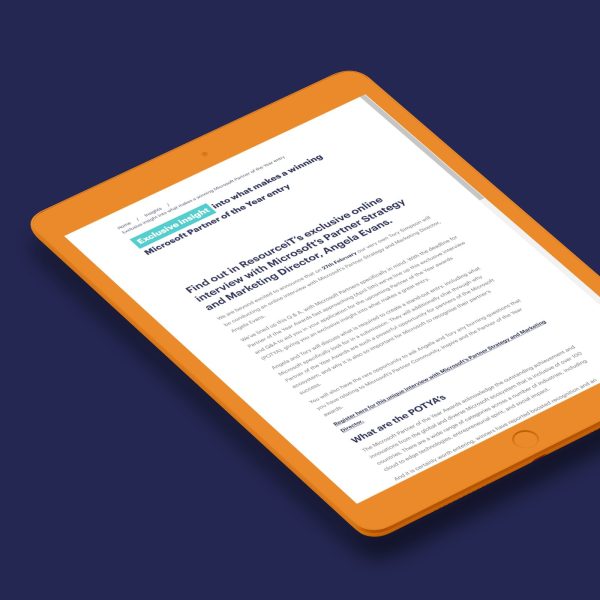Are you looking to be entertained or learn? If you are a user of LinkedIn, it is almost certainly the latter and it is for this precise reason that Document Ads have been introduced to the platform that currently has a global membership of 875 million people.
While there’s no denying that LinkedIn houses a huge audience for you to reach out to, it hasn’t always been particularly easy to get valuable and robust content in front of audiences. Particularly when you consider that 94% of B2B marketers leverage LinkedIn, it is certainly a saturated market.
However, the newest form of sponsored content ad format has been designed to help businesses overcome this. Whether you are looking to inform with thought leadership via an eBook, showcase success via case studies, present research and trends via a datasheet, or attract high-quality talent via infographics, this is all possible with Document Ads.
C-suite executives and high-level decision makers strive for exactly this kind of content before making those big decisions – a reason why the initial click through rate has proven to be high. The depth of the information available extremely valuable to LinkedIn members and it has also been reported that there is 4x better engagement in comparison to single image ads.
So, let’s look at these Document Ads that we speak of in more detail.
What are Document Ads?
Document Ads provide businesses with the opportunity to promote documents directly into a LinkedIn feed – big news when you consider that you previously had to direct them to an external site to download any kind of document. There will be a preview of the document in the newsfeed, and a user can then easily read and download the content without having to leave the platform. What’s more, users can decide to gate the content, allowing you to create leads through a Lead Gen Form that is automatically populated using profile data. A seamless user experience to say the least! But what are the main objectives of a Document Ads campaign?
Awareness, leads, and audience understanding
First and foremost, Document Ads are a fantastic way to build awareness amongst key audiences. Having the facility to provide potential leads with your most educational and inspiring content that can be read and downloaded directly in a newsfeed is powerful to say the least. In addition, by gating your content with a lead generation form you can collect high-intent leads, accelerating interest through all phases of the marketing funnel. Furthermore, by utilising LinkedIn Campaign Manager you can measure the interest of your audience by seeing how much your document is read, as well as download clicks by type. This is an excellent feature and allows you to understand what is important to your readers, amending your content strategy as appropriate.
And the results have been impressive, it is reported that Document Ads reduce cost-per-lead by as much as 35%. However, this will only be the case if you implement a campaign in an effective manner, below is some tips to consider before going live.
Dos and Don’ts
- Document Ads are limited to either 300 pages or 1m words, meaning you can pretty much post anything, however the last thing that prospective customers want is an arduous download experience. If it takes too long, they are likely to just move on. It’s for this reason that it is recommended that file sizes are kept under 100mb to ensure an optimal experience.
- When it comes to the introduction text in the post, keep it under 150 characters. This will ensure you avoid truncation on most devices.
- We recommend that you keep documents under ten pages. With most documents being accessed via a phone or tablet you need to make it short, snappy, and powerful. However, do not make the document one continuous page as each page is downloaded as an image.
- It is important to try and keep the PDF layers to a minimum. If this isn’t done, they can render poorly. To further alleviate these issues, remember to flatten the document.
- It is advised that you use images, bullets, and graphics to make the document scannable and visually appealing. It is worth noting that videos and other animations in documents aren’t supported and will only be displayed as static images.
- Avoid using multiple columns of text and small font sizes. This is of course harder to read and scan and it is advised that you should embed fonts and use at least 8pt.
- Do not use CTAs and URLs within the document. While these will be active if the document is downloaded, they will not work as a function when reading on the LinkedIn platform.
Now that we have considered what we should and shouldn’t do, let’s consider what documents are most appropriate for each stage of the sales funnel.
Different documents for different parts of the journey
Depending on where a buyer is at within the sales funnel will dictate what documents are more applicable to them. While all document types will have some relevance to the purchaser, below we have presented the three most beneficial for each of the three stages according to a study by LinkedIn.
Early Stage (Awareness/Interest) – Infographics, Case Studies & Testimonials, Presentations.
Middle Stage (Consideration/Intent) – How-to-guides, Best Practices & Tips, Presentations.
Late Stage (Evaluation/Purchase) – Whitepapers, eBooks, Webinars & Events.
How to set up a campaign
When setting up a Document Ads campaign, the first thing you need to decide on is your objective. Here you have three options, brand awareness, engagement, and lead generation.
Your next step, which will be dictated by your objective, and this is to decide whether to share your content freely, or in exchange for lead information. Options could include building awareness with an ungated eBook or generating leads with a gated case study.
The final step is to measure the impact of your document, assessing how much of your document was viewed and the total amount of downloads. Hopefully, it is here you are proving your assets ROI, but if not, you can make amendments as necessary.
Concluding Remarks
It’s early days for LinkedIn documents ads, but the style and ability to offer a range of pages from a valuable asset to an audience seems promising. We strongly believe that this relatively new ad type has the potential to offer remarkable results – particularly where lead generation is concerned.




